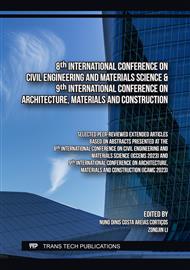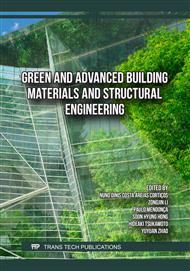p.55
p.61
p.71
p.79
p.87
p.95
p.101
p.113
p.119
Research on the Proportion and Strength of Joint Filler Materials for External Wall Tiles
Abstract:
Tile is the main exterior material of reinforced concrete building in Taiwan. However, the tiles are peeled off due to the deterioration of the building or the force of the earthquake recently. The construction sequence of exterior wall tiles includes cement mortar, waterproof layer, adhesive layer, paste tile and caulk. Most of tiles peel off from the adhesive layer so there are many studies focusing on the construction of adhesive layers. If the adhesive is not applied during construction or deteriorates over the years, it will lose its adhesion, and the caulk plays an important role in fixing the tile to the wall. Therefore, it is necessary to study the joint filling of exterior wall tiles. In this study, the exterior wall construction problems are sorted out, workers often ignore the proper water-cement ratio due to rush work in the construction site. The purpose of this study is to verify the effect of the water-cement ratio of the tile joint filler on the strength by pull-off and shear experiments. Set the water-cement ratio of joint filler to 1:4, 1:2, 1:1.3, 1:1, and quantitatively use in the same area. The results showed that the caulk with a water-cement ratio of 1:4 showed the best pull-off strength, which is 4.5 times that of 1:2. The increase in water volume at the construction site due to rush would lead to a significant decrease in strength. We look forward to providing a reference for on-site construction in this study.
Info:
Periodical:
Pages:
87-92
Citation:
Online since:
December 2023
Authors:
Price:
Сopyright:
© 2023 Trans Tech Publications Ltd. All Rights Reserved
Share:
Citation:



